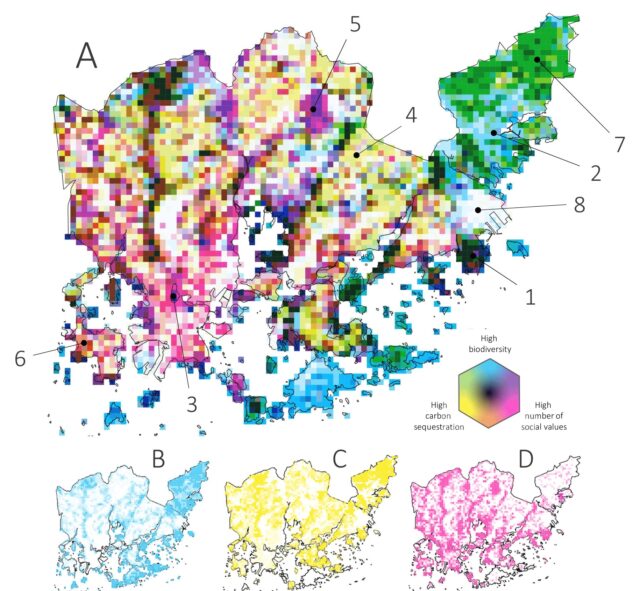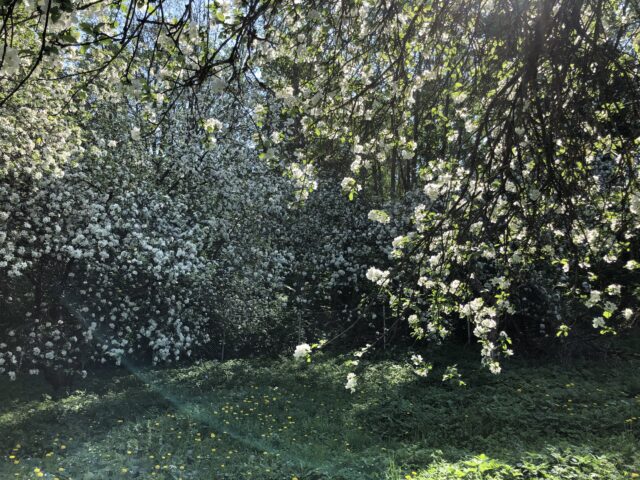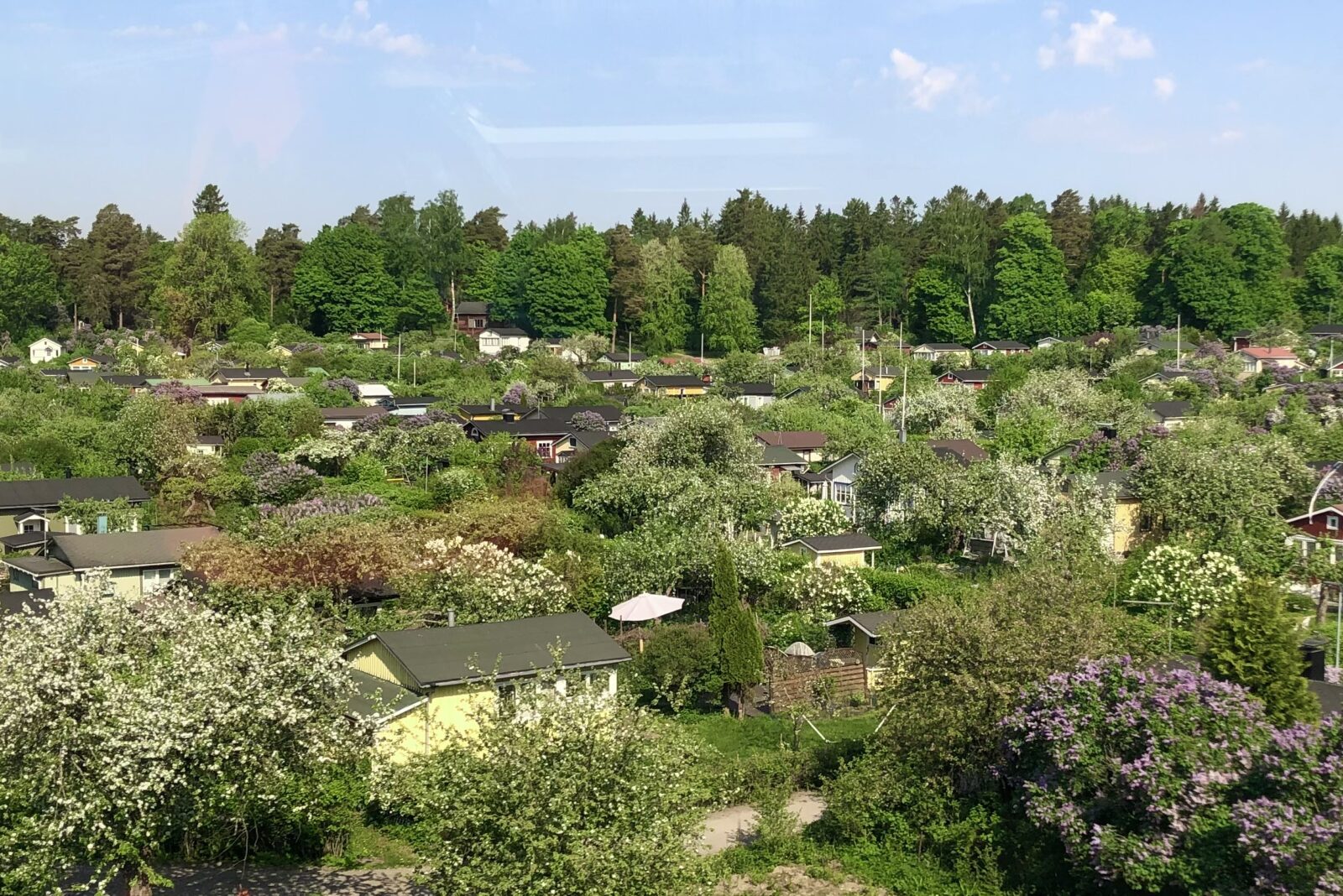A new study published in the CO-CARBON project combines modelled data on biodiversity and carbon flow with spatial data on social values for green areas, mapped by over 3000 residents of Helsinki. The results of the study provide both opportunities and challenges for urban sustainability transformations.
Urban green areas are important for biodiversity and carbon sequestration in cities, but they are also vital for urban residents. However, the three-way interplay between biodiversity, carbon sequestration, and the social values associated with green areas has so far remained poorly understood. This has made it difficult to plan green areas, protect biodiversity, or foster carbon sequestration in cities in a manner that maximizes benefits across all three data types.
By helping identify green areas important for biodiversity, carbon sequestration, and urban residents, the study contributes critically to urban climate and biodiversity policy goals. In Helsinki, these important green areas include the large forested regions of, for example, Uutela, Mustavuori, Kivinokka, and Haltiala.

On the other hand, the results also illustrate how the world can be much more complex than we previously thought: There are many green areas in Helsinki important in terms of biodiversity and social values, but not so much in terms of carbon sequestration, and vice versa. What’s more, the social values urban residents associate with green areas are diverse, and the relationships between individual values and biodiversity or carbon sequestration differ markedly in terms of strength and shape.
Further complexity is introduced to the situation by the result that different people value green areas for slightly different reasons: in this study and previous ones, for example, it was observed that women are more likely than men to value green areas for aesthetic or restorative reasons.

– ”Urban residents find green areas important for a variety of reasons – for one it is about their beautiful scenery, for others about recreation or nature experiences. The study now published shows how each of these reasons follows the biodiversity and carbon flow in green areas with their own, slightly different manners: the interplay between biodiversity, carbon flow, and social values for green areas is more nuanced than we previously knew”, says researcher Jussi Lampinen (Copenhagen University) who led the writing of the article.
The study ”Social values for biodiversity and carbon flow in cities” can be accessed freely in the journal People and Nature at: https://besjournals.onlinelibrary.wiley.com/doi/10.1002/pan3.10731
More information:
Jussi Lampinen, jussi.lampinen@helsinki.fi, visiting researcher, University of Copenhagen, Department of Geosciences and Natural Resource Management & post-doctoral researcher, University of Helsinki, HELSUS Institute for Sustainability Science
Oriol García-Antúnez, oriol.garcia@helsinki.fi, post-doctoral researcher, University of Helsinki, Department of Economics and Management
Christopher Raymond, christopher.raymond@helsinki.fi, Professor, University of Helsinki, Ecosystems and Environment Research Programme, Department of Economics and Management
Starting photo: Herttoniemi allotment garden in spring (Jussi Lampinen)
